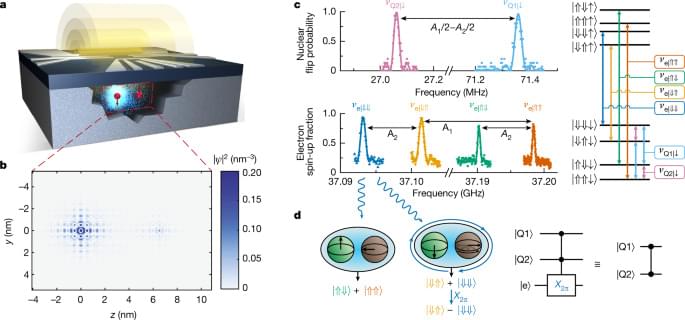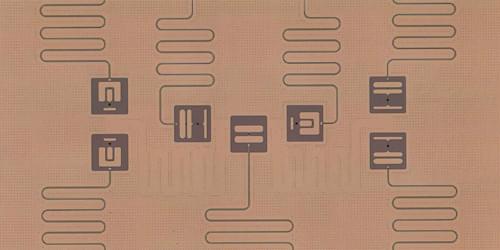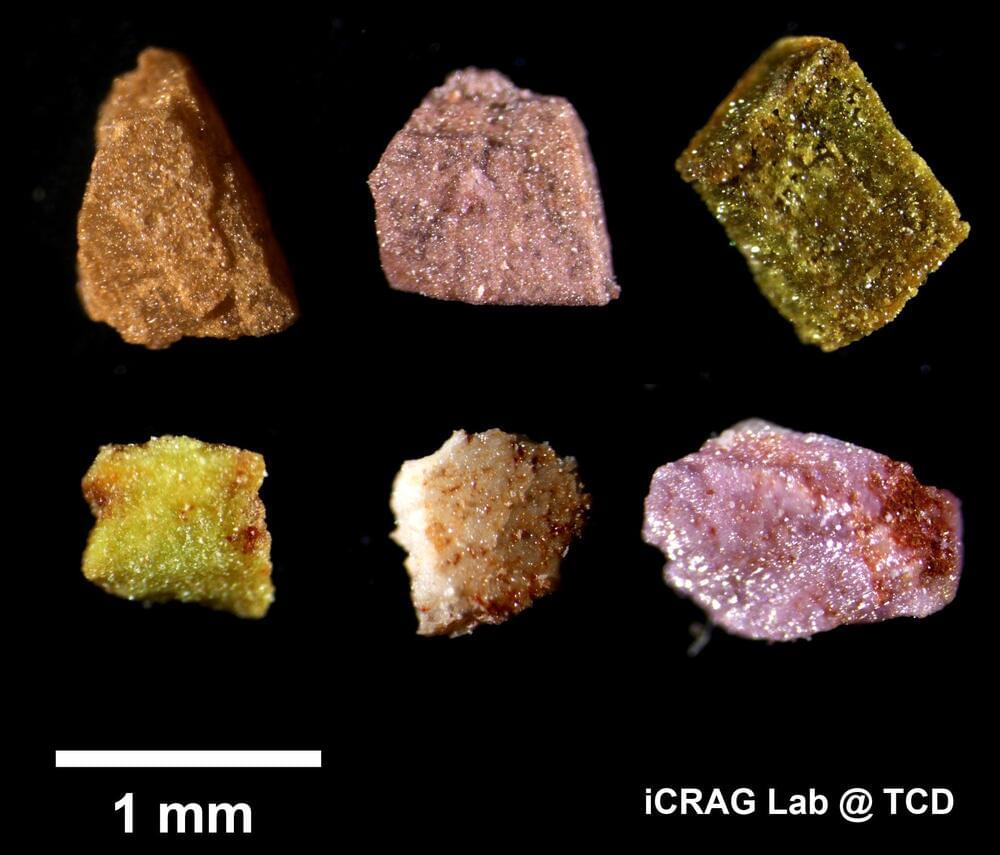A new atomic-scale experiment all but settles the origin of the strong form of superconductivity seen in cuprate crystals, confirming a 35-year-old theory.



The list of things that interest Elon Musk ranges from space travel to easing Los Angeles’ infamous traffic.
One thing that doesn’t make the cut? Patents.
The 51-year-old entrepreneur recently appeared on CNBC’s “Jay Leno’s Garage” to give the former “Tonight Show” host a tour around the SpaceX Starbase facility in Texas.

Circa 2022 Silicon based quantum computer is 99 percent accurate.
Universal quantum logic operations with fidelity exceeding 99%, approaching the threshold of fault tolerance, are realized in a scalable silicon device comprising an electron and two phosphorus nuclei, and a fidelity of 92.5% is obtained for a three-qubit entangled state.

A theoretical physicist who has never had a regular job has won the most lucrative prize in science for his pioneering contributions to the mind-bending field of quantum computing.
David Deutsch, who is affiliated with the University of Oxford the $3m (about £2.65m) Breakthrough prize in fundamental physics with three other researchers who laid the foundations for the broader discipline of quantum information.

Following the success of the inaugural competition in 2021, Amazon is officially launching the Alexa Prize TaskBot Challenge 2. Starting today, university teams across the globe can apply to compete in developing multimodal conversational agents that assist customers in completing tasks requiring multiple steps and decisions. The first-place team will take home a prize of $500,000.
The TaskBot Challenge 2, which will begin in January 2023, addresses one of the hardest problems in conversational AI — to create next-generation conversational AI experiences that delight customers by addressing their changing needs as they complete complex tasks. It builds upon the Alexa Prize’s foundation of providing universities a unique opportunity to test cutting edge machine learning models with actual customers at scale.



A proof-of-concept study published in the journal Scientific Reports outlines a water-activated disposable paper battery. According to the scientists, it could be used to power a broad variety of low-power, single-use disposable electronics, such as smart labels for tracking items, environmental sensors, and medical diagnostic devices, thereby minimizing their environmental impact.
The battery was developed by Gustav Nyström and colleagues, and it consists of at least one cell that is one centimeter squared and is made up of three inks that have been printed on a rectangular piece of paper. The paper strip is covered with sodium chloride salt, and one of its shorter ends has been dipped in wax.
One of the flat sides of the paper is printed with ink containing graphite flakes, which serves as the positive end of the battery (cathode). The other side is printed with ink containing zinc powder, which serves as the negative end of the battery (anode).

New light has been shed on the formation of increasingly precious rare earth elements (REEs) by researchers from Trinity College Dublin. They accomplished this by creating synthetic rocks and testing their responses to varying environmental conditions. REEs are used in many electronic devices and green energy technologies, including everything from smartphones to electric vehicles.
The findings, just published on September 19 in the journal Global Challenges, have implications for recycling REEs from electronic waste, designing materials with advanced functional properties, and even for finding new REE deposits hidden around the globe.
Dr. Juan Diego Rodriguez-Blanco, Associate Professor in Nanomineralogy at Trinity and an iCRAG (SFI Research Centre in Applied Geosciences) Funded Investigator, was the principal investigator of the work. He said:

Most of us consider nightmares pretty harmless, but apparently, they can be a bad sign. According to research at the University of Birmingham, people who experience frequent bad dreams in middle age are more likely to be diagnosed with dementia later in life.
New research suggests nightmares may become common several years or even decades before the characteristic memory and thinking problems of dementia set in. The study will be published today (September 21, 2022) in The Lancet.
Founded in 1,823 by Thomas Wakley, The Lancet is a weekly peer-reviewed general medical journal. It is one of the world’s oldest, most prestigious, and best known general medical journals. The journal publishes original research articles, review articles (“seminars” and “reviews”), editorials, book reviews, correspondence, as well as news features and case reports. The Lancet has editorial offices in London, New York, and Beijing.